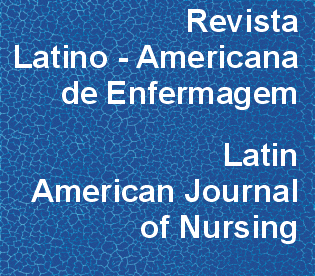Colonization of nursing professionals by Staphylococcus aureus
DOI:
https://doi.org/10.1590/S0104-11692011000200014Keywords:
Staphylococcus aureus, Methicillin Resistance, Nursing, Team, Carrier State, PrevalenceAbstract
This cross-sectional study aimed to investigate the presence of Staphylococcus aureus in the saliva of the nursing team of a teaching hospital in the interior of São Paulo State. Three saliva samples were collected from 351 individuals with an interval of two months between each collection. All ethical aspects were considered. In 867 (82.3%) cultures there was no identification of Staphylococcus aureus in the saliva, in 88 (17.7%) cultures Staphylococcus aureus was isolated, 26 (2.5%) of which were resistant to methicillin. The prevalence of professionals colonized by Staphylococcus aureus was 41.0% (144/351), of which 7.1% (25/351) were characterized as methicillin-resistant Staphylococcus aureus. Transient carriers represented 81.2% and persistent carriers 18.8%. Resistance to mupirocin was 73.1% of MRSA and 9.3% of MSSA. The results demonstrate that it is the nurse and nursing technician that are the professional categories most susceptible to MRSA. Broader discussion on the thematic and interventions are needed.Downloads
Download data is not yet available.
Downloads
Published
2011-04-01
Issue
Section
Original Articles
License
RLAE’s authorship concept is based on the substantial contribution by each of the individuals listed as authors, mainly in terms of conceiving and planning the research project, collecting or analyzing and interpreting data, writing and critical review. Indication of authors’ names under the article title is limited to six. If more, authors are listed on the online submission form under Acknowledgements. The possibility of including more than six authors will only be examined on multicenter studies, considering the explanations presented by the authors.Including names of authors whose contribution does not fit into the above criteria cannot be justified. Those names can be included in the Acknowledgements section.
Authors are fully responsible for the concepts disseminated in their manuscripts, which do not necessarily reflect the editors’ and editorial board’s opinion.
How to Cite
Colonization of nursing professionals by Staphylococcus aureus . (2011). Revista Latino-Americana De Enfermagem, 19(2), 325-331. https://doi.org/10.1590/S0104-11692011000200014



